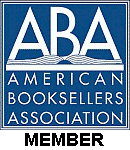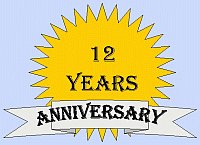Andalusian Gaspacho
by Van Wyck Brooks
 To serve six, peel and dice in very small pieces into one bowl:
To serve six, peel and dice in very small pieces into one bowl:
Six tomatoes
Two cucumbers
Four pimientos, reserving the juice
Mince one large, sweet onion
Mash two cloves of garlic (or skewer the garlic on a toothpick and remove it before serving the soup)
Add to this:
Four tablespoons of vinegar, and four tablespoons of olive oil
Salt
Freshly-ground pepper and Tabasco to taste
One cup of Ice water
Chill in the refrigerator overnight or for at least an hour. The bulk of the soup will increase as it chills. Serve with an ice cube in each soup plate.
Gaspacho aka Gazpacho is a cold Spanish tomato-based raw vegetable soup and has its origins in and greatest contemporary associations with the southern region of Andalucía. Gazpacho is widely consumed throughout Spain, neighboring Portugal (where it is known as Gaspacho) and parts of Latin America. Gazpacho is mostly consumed during the summer months when fresh vegetables are most readily available and when the weather makes cold dishes most appealing.
 Gazpacho has somewhat uncertain but definitely ancient origins. It is now believed either to have come into Spain as an Arab soup made up of stale bread, olive oil, water, and garlic during the Moorish conquest, or to have come to Spain with the Romans but with the addition of wine vinegar to the other ingredients. By the Middle Ages, Gazpacho had became a part of standard Andalusian cuisine, particularly in Seville, and consisted of stale bread, garlic, olive oil, salt, and vinegar. The origin of the word Gazpacho is uncertain, but currently it is thought to have be derived either from the Mozarab word caspa, "residue" or "fragments" or from a pre-Roman Iberian word that was changed with the Arabic conquest. This name in both case is most likely related to the fact that the soup contains small pieces of hard (i.e., stale) bread.
Gazpacho has somewhat uncertain but definitely ancient origins. It is now believed either to have come into Spain as an Arab soup made up of stale bread, olive oil, water, and garlic during the Moorish conquest, or to have come to Spain with the Romans but with the addition of wine vinegar to the other ingredients. By the Middle Ages, Gazpacho had became a part of standard Andalusian cuisine, particularly in Seville, and consisted of stale bread, garlic, olive oil, salt, and vinegar. The origin of the word Gazpacho is uncertain, but currently it is thought to have be derived either from the Mozarab word caspa, "residue" or "fragments" or from a pre-Roman Iberian word that was changed with the Arabic conquest. This name in both case is most likely related to the fact that the soup contains small pieces of hard (i.e., stale) bread.
 Gazpacho was originally a food of the poor and was very basic being made up of only bread, water, and olive oil. These ingredients were pounded together in a large wooden bowl called a dornillo and the resulting cool soup was traditionally eaten by workers in the fields. It is still popular with Spanish farm workers today both because it provides welcome relief from the summer heat and because the ready availiability and affordability of fresh vegetables, particularly tomato, has resulted in a quite tasty, nutritious, and refreshing dish.
Gazpacho was originally a food of the poor and was very basic being made up of only bread, water, and olive oil. These ingredients were pounded together in a large wooden bowl called a dornillo and the resulting cool soup was traditionally eaten by workers in the fields. It is still popular with Spanish farm workers today both because it provides welcome relief from the summer heat and because the ready availiability and affordability of fresh vegetables, particularly tomato, has resulted in a quite tasty, nutritious, and refreshing dish.
 Tomato was added to the recipe for Gazpacho after the fruit was brought back from America and became accepted as a food. The tomato was first introduced to Europe by Cortez in 1519. Tomato plants had been found growing in Montezuma's gardens and initially tomatoes were were introduced into Europe as ornamental curiosities. The Aztecs had called the plant xitomatl. The tomato (xitomatl) variety first introduced to Spain was the yellow or golden tomato, which was given the name pomi d'oro (golden apple) at that time. Red tomatoes later were introduced to Spain via Morocco, hence their name at the time, pomo d'Moro (apple of the Moors). Early consumption of the tomato in Spain was very simple. It was consumed by itself with only oil, salt and pepper.
Tomato was added to the recipe for Gazpacho after the fruit was brought back from America and became accepted as a food. The tomato was first introduced to Europe by Cortez in 1519. Tomato plants had been found growing in Montezuma's gardens and initially tomatoes were were introduced into Europe as ornamental curiosities. The Aztecs had called the plant xitomatl. The tomato (xitomatl) variety first introduced to Spain was the yellow or golden tomato, which was given the name pomi d'oro (golden apple) at that time. Red tomatoes later were introduced to Spain via Morocco, hence their name at the time, pomo d'Moro (apple of the Moors). Early consumption of the tomato in Spain was very simple. It was consumed by itself with only oil, salt and pepper.
 There are many variations of modern Gazpacho. The most frequent variation from the traditional recipe is the omition of bread, but there are also many variations which do not include tomatoes. Instead the may include various combinations of other fresh vegetables or fruits including avocados, cucumbers, parsley, watermelon, grapes, meat stock, seafood, and more. In modern usage, the word Gazpacho has almost become a synonym for any chilled vegetable soup.
There are many variations of modern Gazpacho. The most frequent variation from the traditional recipe is the omition of bread, but there are also many variations which do not include tomatoes. Instead the may include various combinations of other fresh vegetables or fruits including avocados, cucumbers, parsley, watermelon, grapes, meat stock, seafood, and more. In modern usage, the word Gazpacho has almost become a synonym for any chilled vegetable soup.
 In Andalucía, most gazpacho recipes typically include hard (i.e., stale) bread, tomato, cucumber, bell pepper, garlic, olive oil, wine vinegar, and salt. Onion is not an uncommon addition. Other variants include additional herbs, black pepper, celery, and other fresh summer vegetables. Traditional gazpacho is made by pounding the vegetables into a sort of a past or slurry using a mortar and pestle. This method is still considered the best because it prevents a completely smooth consistency, heating, and foaming, all unintended consequences of using blenders and food processors for its preparation.
In Andalucía, most gazpacho recipes typically include hard (i.e., stale) bread, tomato, cucumber, bell pepper, garlic, olive oil, wine vinegar, and salt. Onion is not an uncommon addition. Other variants include additional herbs, black pepper, celery, and other fresh summer vegetables. Traditional gazpacho is made by pounding the vegetables into a sort of a past or slurry using a mortar and pestle. This method is still considered the best because it prevents a completely smooth consistency, heating, and foaming, all unintended consequences of using blenders and food processors for its preparation.
 An important aspact of Andalusian Gazpacho is its presentation with various garnishes. Often, these garnishes are made up of coarsley chopped versions of the same vegetables used in the preparation of the Gazpacho. In addition to chopped vegetables, most Andalusian Gazpacho is also garnished with croutons and chopped hard boiled egg. The garnishes are served separately so the diner can add them to the soup themselves. Sometimes fine quality Spanish air-cured ham (e.g. jamón serrano, jamón ibérico, etc.) is also added to the soup in the kitchen prior to serving.
An important aspact of Andalusian Gazpacho is its presentation with various garnishes. Often, these garnishes are made up of coarsley chopped versions of the same vegetables used in the preparation of the Gazpacho. In addition to chopped vegetables, most Andalusian Gazpacho is also garnished with croutons and chopped hard boiled egg. The garnishes are served separately so the diner can add them to the soup themselves. Sometimes fine quality Spanish air-cured ham (e.g. jamón serrano, jamón ibérico, etc.) is also added to the soup in the kitchen prior to serving.  This variation is usually called Gazpacho Extremadura style or Gazpacho Extremeño and is popular in the Extremadura aka Estremaura region of western Spain. As noted in Mr. Brooks recipe, Gazpacho is frequently served with ice cubes if the weather is has been especially hot or if the soup has not had enough time to chill before serving.
This variation is usually called Gazpacho Extremadura style or Gazpacho Extremeño and is popular in the Extremadura aka Estremaura region of western Spain. As noted in Mr. Brooks recipe, Gazpacho is frequently served with ice cubes if the weather is has been especially hot or if the soup has not had enough time to chill before serving.
 Andalucía or Andalusia is the largest of of seventeen Autonomous Regions within Spain and contains the provinces Almería, Cádiz, Córdoba, Granada, Huelva, Jaén, Málaga, and Seville. This region was the center of Muslim power on the Iberian peninsula from about 718 to 1492 CE. Around the world, Andalucía is most closely associated with Flamenco, a complex cultural and musical tradition.
Andalucía or Andalusia is the largest of of seventeen Autonomous Regions within Spain and contains the provinces Almería, Cádiz, Córdoba, Granada, Huelva, Jaén, Málaga, and Seville. This region was the center of Muslim power on the Iberian peninsula from about 718 to 1492 CE. Around the world, Andalucía is most closely associated with Flamenco, a complex cultural and musical tradition.  This tradition is the result of a blending of influences from the Arabic, Andalusian, Sephardic, and Gypsy cultures that co-existed in Andalucía prior to and after the Reconquista (Reconquest). Expressive forms of Andalusian culture are primarily Toque (Flamenco guitar), Cante Flamenco (Flamenco song), and El Baile Flamenco (a highly-expressive solo dance). Flamenco music styles are called Palos and there are more than fifty Palos Flamenco.
This tradition is the result of a blending of influences from the Arabic, Andalusian, Sephardic, and Gypsy cultures that co-existed in Andalucía prior to and after the Reconquista (Reconquest). Expressive forms of Andalusian culture are primarily Toque (Flamenco guitar), Cante Flamenco (Flamenco song), and El Baile Flamenco (a highly-expressive solo dance). Flamenco music styles are called Palos and there are more than fifty Palos Flamenco.
 The film Flamenco (1995) directed by Carlos Saura, a film maker with an international reputation for his work, is probably one of the better introductions to Flamenco Toque, Cante Flamenco, and El Baile Flamenco. The film presents thirteen Palos Flamenco, each with song, guitar, and dance: the bularías, a farruca, a martinete, a fandango de huelva, tangos, a taranta, alegrías, siguiriyas, soleás, a guajira of patrician women, a petenera, villancicos, and a rumba. Saura also produced a Flamenco dance trilogy of films, Bodas de Sangre (aka Blood Wedding; 1981), Carmen (1983), and El Amor Brujo (aka A Love Bewitched; 1986). As an asside, Saura's film Goya en Burdeos (aka Goya in Bordeaux; 1999) is well worth watching.
The film Flamenco (1995) directed by Carlos Saura, a film maker with an international reputation for his work, is probably one of the better introductions to Flamenco Toque, Cante Flamenco, and El Baile Flamenco. The film presents thirteen Palos Flamenco, each with song, guitar, and dance: the bularías, a farruca, a martinete, a fandango de huelva, tangos, a taranta, alegrías, siguiriyas, soleás, a guajira of patrician women, a petenera, villancicos, and a rumba. Saura also produced a Flamenco dance trilogy of films, Bodas de Sangre (aka Blood Wedding; 1981), Carmen (1983), and El Amor Brujo (aka A Love Bewitched; 1986). As an asside, Saura's film Goya en Burdeos (aka Goya in Bordeaux; 1999) is well worth watching.
 Van Wyck Brooks (1886 - 1963) was a noted American literary historian, critic, and translator. Brooks was born in Plainfield, New Jersey, eventually graduated from Harvard University in 1908, and spend most of his adult life in Bridgewater, Connecticut. The Wine of the Puritans (1909), his first book, introduced his idea, recurring throughout his work, that American culture was indelibly sufused with the Puritan intellectual heritage and that Puritan materialistic emphasis stunted the nation's development of its own artistic styles reflective of its experiences. In time Brooks developed a greater appreciation for the achievements of American literature and came to celebrate and promote the uniqueness of American literature.
Van Wyck Brooks (1886 - 1963) was a noted American literary historian, critic, and translator. Brooks was born in Plainfield, New Jersey, eventually graduated from Harvard University in 1908, and spend most of his adult life in Bridgewater, Connecticut. The Wine of the Puritans (1909), his first book, introduced his idea, recurring throughout his work, that American culture was indelibly sufused with the Puritan intellectual heritage and that Puritan materialistic emphasis stunted the nation's development of its own artistic styles reflective of its experiences. In time Brooks developed a greater appreciation for the achievements of American literature and came to celebrate and promote the uniqueness of American literature.
 Contemporary readers are most likely to know Brooks for his book The Flowering of New England, 1815-1865: Emerson, Thoreau, Hawthorne and the Beginnings of American Literature (1936). This book was the first in a series of five literary histories that the author named his Makers and Finders series. The Flowering of New England received the 1937 Pulitzer Prize for History. The books in Brooks' landmark Makers and Finders series are The Flowering of New England, 1815-1865 (1936), New England: Indian Summer, 1865 – 1915 (1940), The World of Washington Irving (1944), The Times of Melville and Whitman (1947), and The Confident Years: 1885 – 1915 (1952). The sum of these works was a history of the development of American literature through the 19th century and in the early 20th.
Contemporary readers are most likely to know Brooks for his book The Flowering of New England, 1815-1865: Emerson, Thoreau, Hawthorne and the Beginnings of American Literature (1936). This book was the first in a series of five literary histories that the author named his Makers and Finders series. The Flowering of New England received the 1937 Pulitzer Prize for History. The books in Brooks' landmark Makers and Finders series are The Flowering of New England, 1815-1865 (1936), New England: Indian Summer, 1865 – 1915 (1940), The World of Washington Irving (1944), The Times of Melville and Whitman (1947), and The Confident Years: 1885 – 1915 (1952). The sum of these works was a history of the development of American literature through the 19th century and in the early 20th.
 In addition to his Pulizter Prize for The Flowering of New England, Brooks was also awarded two National Book Awards. One for The Confident Years and another for one of his autobiographical books, Scenes and Portraits: Memories of Childhood and Youth (1954). In additional to his literary biographies Brooks is also received recognition for his collections of literary criticism. Collections of this work were published in the books Emerson and Others (1927), On Literature Today (1941), Opinions of Oliver Allston (1941), and The Writer in America (1953).
In addition to his Pulizter Prize for The Flowering of New England, Brooks was also awarded two National Book Awards. One for The Confident Years and another for one of his autobiographical books, Scenes and Portraits: Memories of Childhood and Youth (1954). In additional to his literary biographies Brooks is also received recognition for his collections of literary criticism. Collections of this work were published in the books Emerson and Others (1927), On Literature Today (1941), Opinions of Oliver Allston (1941), and The Writer in America (1953).  In Brooks' last books, Scenes and Portraits (1954), Days of Phoenix (1957), From a Writer's Notebook (1958), and An Autobiography (1965), he firmly established a reputation for autobiographical writing which included the receipt of the National Book Award for Scenes and Portraits. Brooks', particularly in his literary histories, is noted for incorporating detailed biographical information in combination to a vivid, readable, and engaging anecdotal style.
In Brooks' last books, Scenes and Portraits (1954), Days of Phoenix (1957), From a Writer's Notebook (1958), and An Autobiography (1965), he firmly established a reputation for autobiographical writing which included the receipt of the National Book Award for Scenes and Portraits. Brooks', particularly in his literary histories, is noted for incorporating detailed biographical information in combination to a vivid, readable, and engaging anecdotal style.
 The Wine of the Puritans: A Study of Present-Day America (1909)
The Wine of the Puritans: A Study of Present-Day America (1909)
Brooks' first critical book sets forth one of his dominating themes--the impact of Puritanism on the formation of American ideas and culture. Brooks, one of the twentieth century's major American literary critics, would produce critical biographies of Mark Twain and Henry James and his multipart Finders and Makers series of literary and cultural history.
 America's Coming-of-Age (1915)
America's Coming-of-Age (1915)
Brooks' analysis of American literary culture establishes a dichotomy between the highbrows, idealists who remain aloof from American realities, and the lowbrows, vulgar materialists. He uses this split to explain the failure of American culture, with Whitman as an example of a writer who bridged the gap. The book establishes Brooks's reputation as one of the leading literary and cultural critics of the period.
 The Ordeal of Mark Twain (1920)
The Ordeal of Mark Twain (1920)
Brooks's groundbreaking psychological assessment of Twain's character and career helps establish a view of the author that has dominated subsequent biographical and critical debate. As Brooks asserts, "The main idea in the book is that Mark Twain's career was a tragedy--a tragedy for himself and a tragedy for mankind."
 The Pilgrimage of Henry James (1925)
The Pilgrimage of Henry James (1925)
In contrast to his thesis in The Ordeal of Mark Twain, which asserts the cost of Twain's accepting the confines of American society, Brooks looks at the cost James paid for trying to escape those same confines by living in Europe. The Life of Emerson (1932) would present a positive synthesis of the two positions.
Emerson and Others (1927)
Three Essays on America (1927)
Sketches in Criticism (1932)
 The Flowering of New England, 1815-1865 (1936)
The Flowering of New England, 1815-1865 (1936)
The first of the author's Makers and Finders series of literary and cultural histories of the United States wins the Pulitzer Prize. It looks at the social, political, and religious context of the careers of writers such as Longfellow, Emerson, Hawthorne, and Thoreau.

New England Indian Summer: 1865-1915 (1940)
The second of the author's Makers and Finders series on American culture is an anecdotally rich, impressionistic view of the American literary scene in the postbellum period. Brooks's clarity and vivid style help produce one of the rarest of successes: literary criticism on the bestseller list.
On Literature Today (1941)
Brooks delivers a harsh assessment of the perceived cynicism of writers such as John Dos Passos, Ernest Hemingway, and Thomas Wolfe, calling for a literature of affirmation rooted in "health, will, courage, and faith in human nature." The same themes are sounded in the author's other 1941 volume of criticism, Opinions of Oliver Allston.
 The World of Washington Irving (1944)
The World of Washington Irving (1944)
A continuation of the author's masterly Makers and Finders series on American literary history. This volume covers the nation beyond New England in the period 1800 to 1840.
The Time of Melville and Whitman (1947)
The fourth of the critic's Makers and Finders series on writers in America covers the period from the 1840s to the 1880s.
 The Confident Years (1952)
The Confident Years (1952)
This is the fifth and final volume of Brooks Makers and Finders series on the history of the development of American culture and literature covering about one hundred years from about 1815 to about 1915.
 The Writer in America (1953)
The Writer in America (1953)
This book is Brooks response to criticisms at the time that his literary histories did not evaluate and utilize the quality of literary skills as the basis for marking literary fitures as either of major or minor importance in the development American literature. Brooks argues that biography and social analysis are an essential part of literary history and that aesthetics is the least important quality in setting apart the most significant and influential actors in the history of the development of an American literature.
John Sloan: A Painter's Life (1955)
Helen Keller: Sketch for a Portrait (1956)
Days of the Phoenix: The Nineteen-Twenties I Remember (1957)
The Dream of Arcadia: American Writers and Artists in Italy 1760-1915 (1958)
From a Writer's Notebook (1958)
 Howells: His Life and World (1959)
Howells: His Life and World (1959)
William Dean Howells (1837 – 1920) was a noted American literary critic and author 'Realist' style fiction. As a critic, he was famously able to bridge the gulf between American popular writers such as Mark Twain and authors of the loftier, intellectual American literary fiction such as Henry James. Brook's book about Howells is less a critical biography than an impressionistic and sympathetic interpretation him and his place in American literary history. This empathetic portrayal developed in part from Brooks' early professional association with Howells beginning about 1907, near the beginning of Brooks' professional career. Howells was particularly influential in American literary circles because of his writing for the Atlantic Monthly and Harper's Magazine as well as his time spent as assistant editor and then editor for the Atlantic Monthly.
From the Shadow of the Mountain: My Post-Meridian Years (1961)
Fenollosa and His Circle, with Other Essays in Biography (1962)
An Autobiography (1965)

For additional recipes see also:
Corn Pone, Corn Domestication in the Americas, and Nixtamalization
Beer Bread, a bronze age flavor variation with other ideas'."
Spring Fava Beans, Roman Style
Christmas holiday food and drink from the works of Charles Dickens
Beef Burgundy, Crackling Bread, Pice Ar Y Maen, Sevillian Yellow Plum Conserve, and Les Ioles (Writers' and Artists' recipes)
Omlette Aurore by Alice B. Toklas, Artists' and Writers' Recipes
Home
Older Article: The Adventures of Tintin in Film










